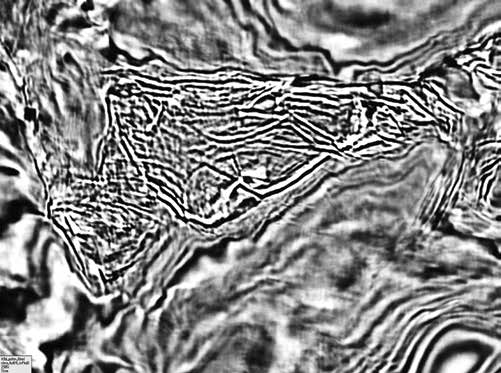Application of seismic attribute analysis to study fractured basement
Tóm tắt
Seismic attribute analysis is supposed to have a great potential to reveal latent geological features and has been implemented extensively in Cuu Long basin to predict the fractured reservoirs of the basement, however, the results so far have not been up to expectations. In this paper, previous seismic attribute studies are reviewed to show that the low signal to noise ratio (SNR) and the presence of artefacts are the main causes of inaccuracies or even misleading interpretations. To improve the effectiveness of seismic attributes in prediction of fractured reservoirs, three approaches to reduce the influence of noise and artefacts are proposed. The simplest way is to focus on the top basement surface instead of the section below it. A selective combination of independent attributes is used to delineate fault traces and anomalous zones related to rough boundaries on the top basement. To utilise the information inside the basement, principal component analysis (PCA) can be employed to separate noise and artefacts from the useful data. Ultimately, it is possible to increase the SNR in the processing stage with diffraction imaging technique. The processed data then can be analysed by seismic attributes or overlaid on conventional data to aid the interpretation of subtle faults and fractures.
Các tài liệu tham khảo
2. PVN. Reserve assessment report of Ruby - Diamond - Topaz fields, Block 01&02. 2013.
3. PVN. Reserve assessment report of Su Tu Den - Su Tu Vang fields, Block 15-1. 2015.
4. Stein Inge Pedersen, Trygve Randen, Lars Sonneland, Øyvind Steen. Automatic fault extraction using artificial ants. SEG Technical Program Expanded Abstracts.
2002: p. 512 - 515.
5. Tom Cox, Krista Seitz. Ant tracking seismic volumes for automated fault interpretation. 2007 CSPG/CSPE GeoConvention, Calgary, Alberta, Canada. 14 - 17 May, 2007.
6. G.Bone, N.T.Giang, D.N.Quy, V.N.An, D.Pham, J.Sun, Q.Tang. Improvements in seismic imaging in fractured basement, Block 15-1, offshore Vietnam. Fractured Basement Reservoir, Petrovietnam. 2008; 4: p. 63 - 69.
7. Don Pham, Jason Sun, James Sun, Qingbing Tang, Graeme Bone, Nguyen Truong Giang. Imaging of fractures and faults inside granite basement using controlled beam
migration. ASEG Extended Abstracts. 2007; 1: p. 1 - 5.
8. Saleh Al-Dossary, Kurt J.Marfurt. 3D volumetric multispectral estimates of reflector curvature and rotation. Geophysics. 2006; 71(5): p. 41 - 51.
9. P.Scholtz. Coherence calculation of different seismic attribute traces for fault interpretation. European Association Of Geophysical Exploration. 1996; 61: p. 65.
10. Satinder Chopra, Kurt J.Marfurt. Seismic attributes for fault/fracture characterization. SEG Technical Program Expanded Abstracts. 2007: p. 1520 - 1524.
11. E.J.H.Rijks, J.C.E.M.Jauffred. Attribute extraction: An important application in any detailed 3-D interpretation study. The Leading Edge. 1991; 10(9): p. 11 - 19.
12. PVN. Reserve assessment report of Rong field, Block 09-1. 2014.
13. PVN. Reserve assessment report of Bach Ho field, Block 09-1. 2017.
14. David C.Hagen. The application of principal components analysis to seismic data sets. Geoexploration. 1982; 20(1-2): p. 93 - 111.
15. J.R.Scheevel, K.Payrazyan. Principal component analysis applied to 3D seismic data for reservoir property estimation. SPE Reservoir Evaluation & Engineering. 1999;
4(1): p. 64 - 72.
16. Ivan Priezzhev, Aaron Scollard. Fracture detection through seismic cube orthogonal decomposition. Society of Exploration Geophysicists (SEG) Technical Program
Expanded Abstracts. 2013: p. 1308 - 1313.
17. Poorandokht Soltani, Mehrdad Soleimani, Hamid Aghajani. Faults and fractures detection in 2D seismic data based on principal component analysis. International
Journal of Mining and Geo-engineering. 2017; 51(2): p. 199 - 207.
18. N.R.Benfield, A.Guise, D.Chase. Diffraction imaging - a tool to reduce exploration and development risk. First Break. 2016; 34(3): p. 57 - 63.

1. Tác giả giao bản quyền bài viết (tác phẩm) cho Tạp chí Dầu khí, bao gồm quyền xuất bản, tái bản, bán và phân phối toàn bộ hoặc một phần tác phẩm trong các ấn bản điện tử và in của Tạp chí Dầu khí.
2. Bằng cách chuyển nhượng bản quyền này cho Tạp chí Dầu khí, việc sao chép, đăng hoặc sử dụng một phần hay toàn bộ tác phẩm nào của Tạp chí Dầu khí trên bất kỳ phương tiện nào phải trích dẫn đầy đủ, phù hợp về hình thức và nội dung như sau: tiêu đề của bài viết, tên tác giả, tên tạp chí, tập, số, năm, chủ sở hữu bản quyền theo quy định, số DOI. Liên kết đến bài viết cuối cùng được công bố trên trang web của Tạp chí Dầu khí được khuyến khích.




